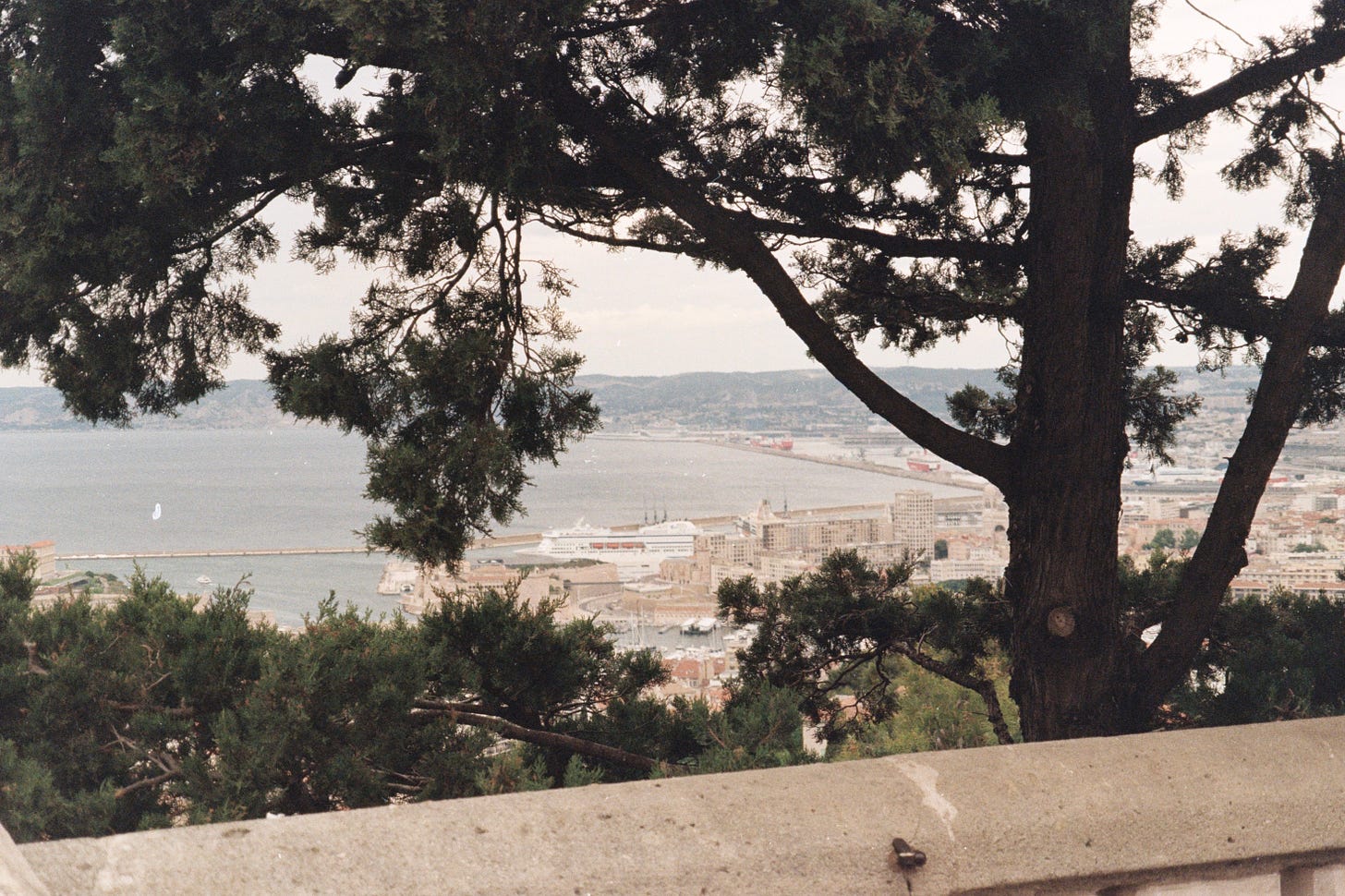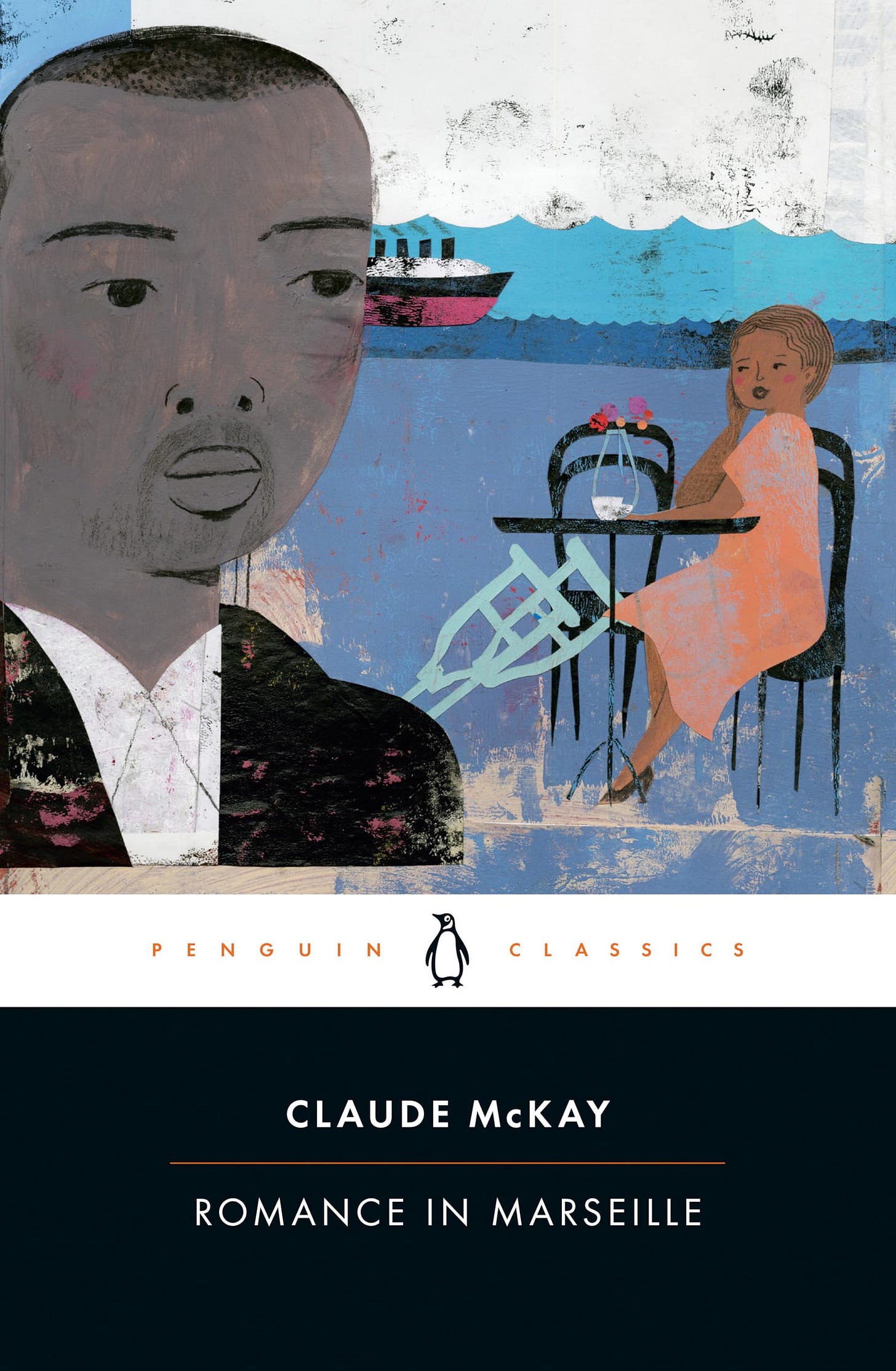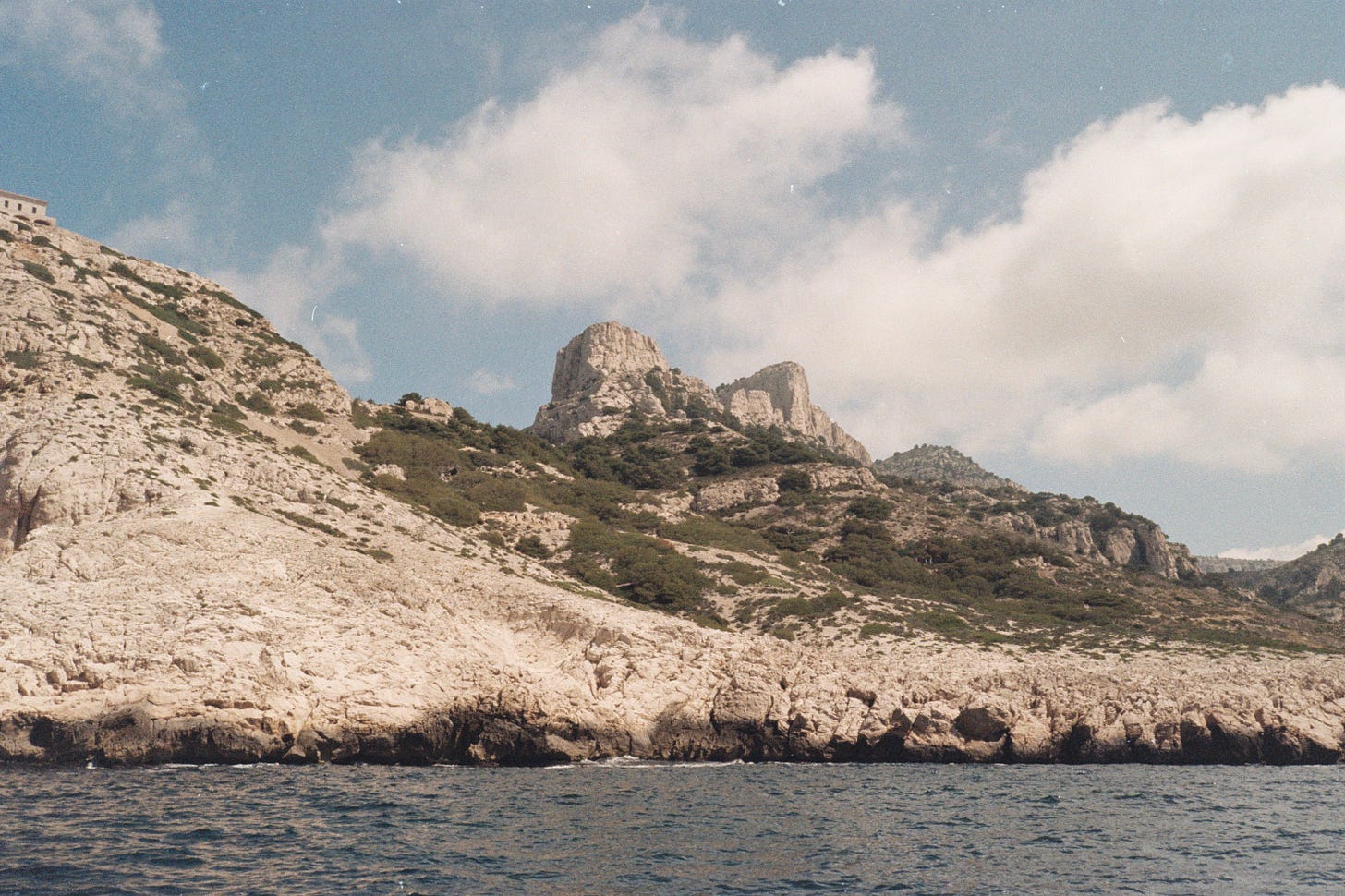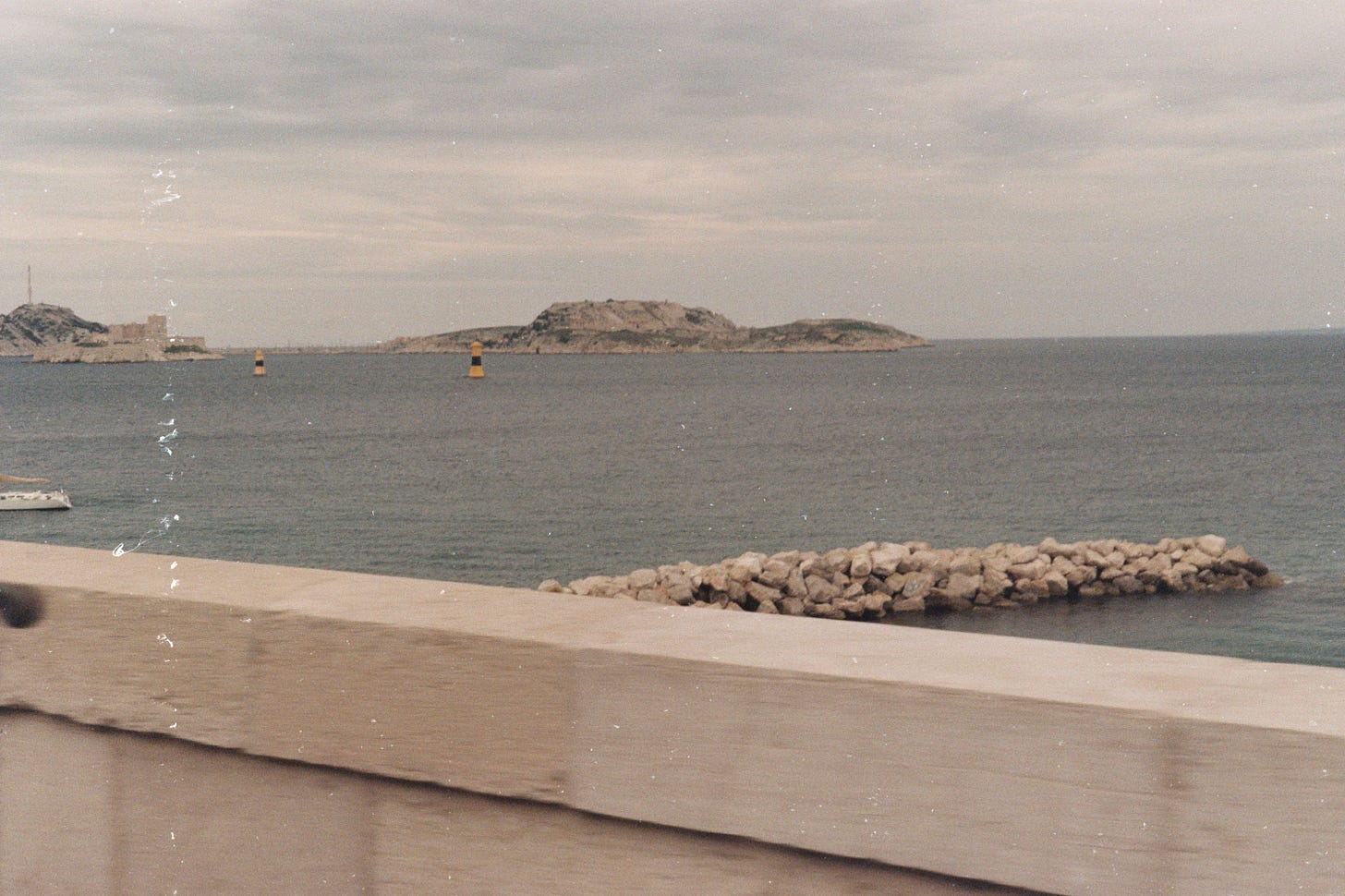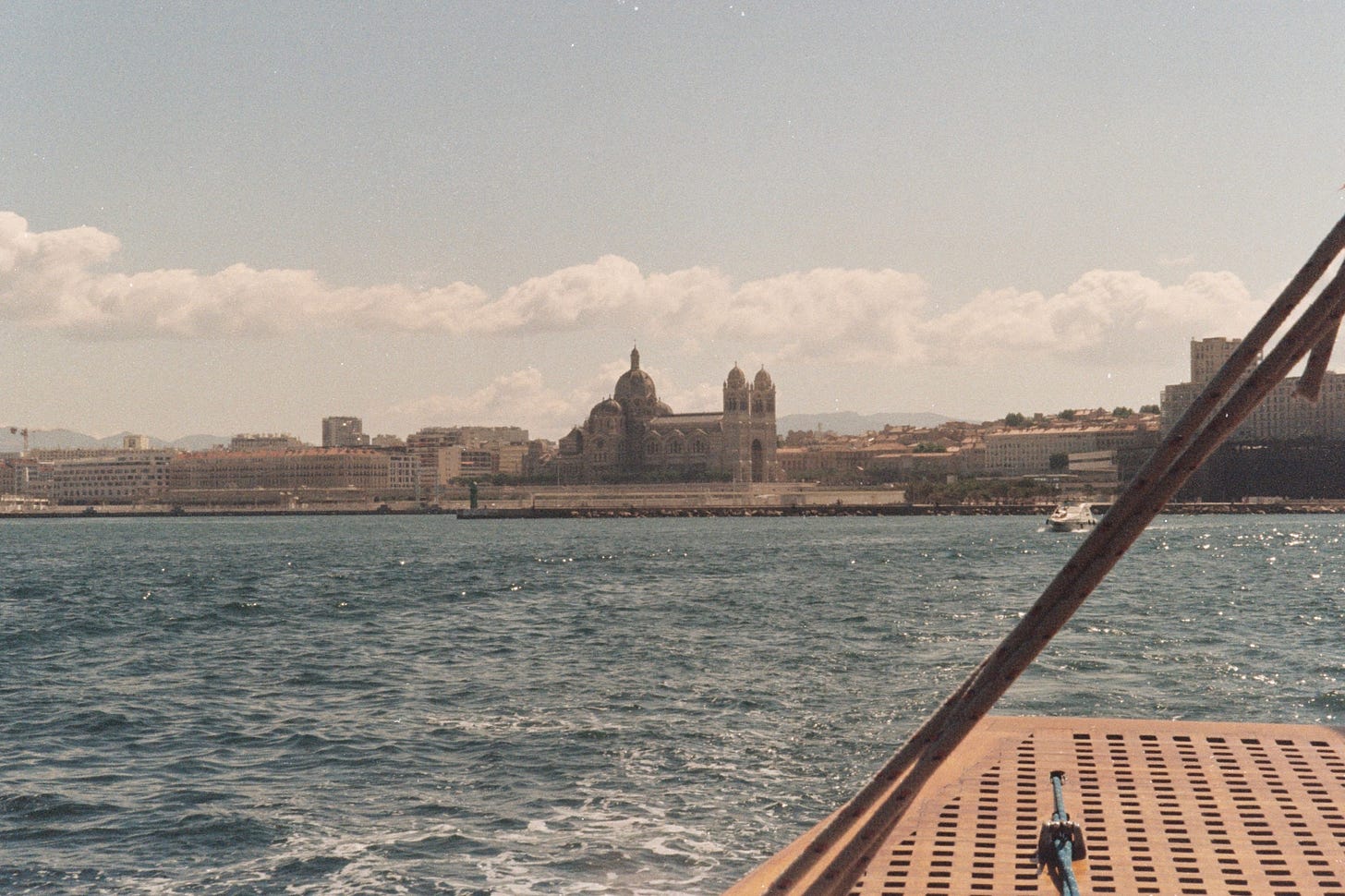romance in marseille by claude mckay
commodified bodies and compromised freedom: exploitation in Romance in Marseille
PRELUDE
Who doesn’t love romance in Marseille?
When I went to Marseille for the first time you have no idea how many people told me not to go. Some people even told me it was “the Detroit of France”. But I honestly had an amazing time. No one made fun of my poor French accent like I assume the Parisians would. The local French, Lebanese, and Vietnamese food is fantastic. The South of France is a special place and I was so lucky to spend that weekend by the water. I feature a lot of my own photographs from my time in Marseille in this post :)
I was really excited to read this novel Romance in Marseille for class! For a little background context, the novel was written almost 90 years ago but the manuscript was discovered in the deep depths of an archive in a library and published in 2020. It follows Lafala, a West African sailor from Marseille, who finds himself in a New York hospital… with his legs amputated from contracting frostbite. He had stowed away on a shipping line after his lover Aslima robs him of all his money. After suing the shipping line for mistreatment, he wins a huge legal payout and is catapulted into wealth. He returns to Marseille to confront his former lover. Eventually, Lafala and Aslima fall into their old ways, and Aslima’s pimp Tintin prevents them from getting married and running away together to Africa. (Spoiler alert…) After some tension and kerfuffles with the locals and agents of the shipping line company that attempt to jail him again, Lafala walks a free man and returns to his homeland in West Africa. Though he initially invites Aslima to return to West Africa with him, Lafala ultimately leaves her.
In today’s post, I deep dive into the ending of the novel where Tintin ends up murdering Aslima after he insults Lafala, and how it complicates our ideas of wealth, the body, and of course… romance. It’s a really fantastic novel and I highly recommend it!
The novel actually reminded me a lot of Rocco and His Brothers (1960), a film made by Visconti. The film follows the Padroni family from migrant family in the South moving to the Northern city Milan. As the family struggles to make ends meet, the brothers are forced between tradition and modernity as a result of this migration. The characters are forced to turn to boxing, a very physical job that damages and hurts them. Eventually, the brothers are thrust into a violent, turbulent love triangle with a prostitute named Nadia, notably also in a very physically demanding line of work. (Spoiler alert…) The final scenes of the film where Nadia is killed by one of the brothers and they manner in which she is killed reveals a lot about a society deeply rooted in Catholicism and the identity of a post-war Italy in its approach to the immigration experience and integration.
The similarities between the body and the forces of capitalism in Romance in Marseille and Rocco and His Brothers were really striking to me. Hopefully I’ll write more about Italian cinema in my upcoming posts! :)
WORDS
THE TEXT:
He found Aslima in the same listless position in which La Fleur had left her. He brandished the letter and raged until he foamed. But Aslima maintained the same silence. Her manner was even mocking.
“You won’t double-cross another man,” said Tintin. “Your life will pay for this.”
“Take it then and stop shouting,” Aslima spoke at last. Tintin was nonplussed. She had spoken so coolly and confidently, as she had lost her mind and herself to that Lafala. He was not a killer. He wondered hesitatingly if she wouldn’t be getting off too easily with death.
Then he began to rage again, but this time more against Lafala… Oh, to be outwitted by a creature of the jungle!... A half-helpless savage… A mere black stump of humanity… Escaped… Gone with all the money and the great deep sea between them. “Better I had killed him that night so his money would have been no use to him either,” cried Tintin. “Better I had killed him like a dog!”
“Kill him! Kill Lafala?” Aslima started up aroused at last. As if she saw Lafala standing there between them and in danger from Tintin. “You’d have to kill me first and kill him over my dead body,” she screamed frantically, and drawing the knife she always carried she advanced upon Tintin like a madwoman.
He could stop her with the gun only. He didn’t want to do it then. There was that money in the hands of Lafala’s representative that he would like her to get first… He cried out at her fearfully like a hunter attacked by a precious wild beast that he would rather capture than slay… But he was forced to let go at her or she would bleed his heart…
She threw up her hands like a bird of prey about to swoop down upon a victim and pitched headlong to the door. He shot the remaining bullets into her body, cursing and calling upon hell to swallow her soul. (McKay 129-130)
In this final passage of Romance in Marseille by Claude McKay, Tintin confronts Aslima in a fit of rage after discovering her apparent betrayal. Despite his threats, she remains calm and defiant, showing a fierce loyalty to Lafala. Enraged and frustrated, Tintin considers killing her but hesitates, thinking death might be too easy for her. His anger then shifts to Lafala, a man he sees as unworthy of success, and he regrets not killing him when he had the chance. Aslima finally reacts, passionately defending Lafala and threatening Tintin with a knife. Tintin, torn between his hatred and his reluctance to kill her, is ultimately forced to shoot Aslima to protect himself. She dies defiantly, and he curses her in her final moments. In Romance in Marseille, Claude McKay crafts a tale that explores the tensions between freedom and entrapment, desire and commodification, through the relationship of three central characters: Lafala, Aslima, and Tintin. Against a backdrop shaped by historical traumas of slavery, imperialism, and economic deprivation, these characters and their love triangle that grounds the major conflict in the story confront systems of exploitation that limit their autonomy and bind them in cycles of dependence and betrayal. Although Lafala is physically absent in the final moments of the novel, his perceived freedom profoundly impacts those left behind, revealing that his financial gains come at a steep cost to others. In the concluding confrontation between Aslima and Tintin, McKay illustrates that no one is truly free; acts of violence and threats unfold from the tensions around Lafala’s fortune and misfortune. Through the tragic outcomes of Lafala and Aslima’s relationship, McKay ultimately critiques the societal forces that shape each character’s fate, challenging readers to consider how historical and social structures continue to thwart true liberation and connection. Through his deliberate syntax, vivid imagery, and shifting perspectives, McKay interrogates each character's complicity in systems of violence and oppression, and he uses their bodies as battlegrounds for larger societal conflicts, blurring the lines between victim and aggressor.
Aslima’s transformation from a victim of circumstance into an agent of her own destiny is central to Romance in Marseille. She gradually resists Tintin’s control, ultimately asserting her loyalty to Lafala. Initially, she appears passive, described as “listless,” a calm figure in the face of Tintin’s anger (McKay 129). Yet, when Tintin reveals his intentions toward Lafala, her passivity gives way to fierce defiance: “‘Kill him! Kill Lafala?’ Aslima started up, aroused at last… ‘You’d have to kill me first and kill him over my dead body’” (129). This transformation is emphasized by McKay’s shift in perspective. The entire passage is rooted in Tintin’s perspective of the scene while still in third-person narrative and mainly using his pronouns, even entering Tintin’s state of mind through short sentences and phrases: “Then he [Tintin] began to rage again, but this time more against Lafala… Oh, to be outwitted by a creature of the jungle!... A half-helpless savage… A mere black stump of humanity… Escaped… Gone with all the money and the great deep sea between them” (McKay 129). However, once Tintin mentions Lafala, McKay describes a vision that only Aslima can see: “‘... Aslima started up aroused at last. As if she saw Lafala standing there between them and in danger from Tintin” (129). The rest of the passage switches back to Tintin’s perspective as Aslima’s actions are done upon him, complicating and alternating between who the aggressor and victim is in this scene. The character’s own personal thoughts imbue the passage with further meaning, highlighting the different roles at play.
Animalistic imagery permeates the novel and specifically this passage, accentuating how power, oppression, and desire for freedom are rooted in primal instincts. Aslima is also likened to an animal by Tintin, symbolizing her oscillation between vulnerability and fierce agency. At one point, “She threw up her hands like a bird of prey about to swoop down upon a victim,” transforming her into a predator, a bird of prey who gains control over her fate and the narrative, if only momentarily (McKay 130). This imagery reflects Aslima’s complex position within a system that views her as both a commodity and a threat, underscoring McKay’s critique of an exploitative society where survival requires her to embrace aggression. McKay uses these moments of predatory strength to suggest that Aslima’s aggression is a means of survival, a desperate bid for self-preservation in a hostile environment where vulnerability and true freedom or autonomy could mean death.
Central to this power struggle is the theme of possession, particularly in how Tintin perceives Aslima as a prize to control. His perspective initially dominates, casting Aslima as something to be tamed, as seen in his frustration: “He cried out at her fearfully like a hunter attacked by a precious wild beast that he would rather capture than slay… But he was forced to let go at her or she would bleed his heart” (McKay 129-130). As a pimp, Tintin views ownership as the ultimate power, seeking to reassert control over what he has lost. His view of Lafala is similarly dehumanizing, seeing him not as a man deserving of autonomy but as a “creature of the jungle” and a “mere black stump of humanity,” an escaped object whose liberation threatens Tintin’s control and economic security (McKay 129). This perspective reveals the inherent exploitation in Tintin’s worldview, positioning both Lafala and Aslima as objects within a system that commodifies human lives.
Tintin’s background complicates his character, adding depth to his motivations and revealing his own entrapment in exploitative systems. McKay subtly reveals that Tintin, the “son of country laborers, born and raised in a small village,” suggesting a humble, disadvantaged beginning (McKay 63). As a soldier, he was exposed to a system that commodified bodies for labor and violence. Through the military, he entered the trade of procuring clients for brothels—a role that reinforced cycles of exploitation while also providing a means of survival. After his service, he continued this work, his background marked not by patriotic glory but by absence and economic insecurity. His violent rage toward Lafala—“Better I had killed him that night so his money would have been no use to him either”—reveals a bitterness rooted in envy and frustration (McKay 129). His violence, then, stems not from simple hatred but from a desperation ingrained by systemic scarcity and oppression, captured in McKay’s description of his experience in the army: “no cigarette money, no beer money, no money for loving” (McKay 63). Tintin’s lack of means and choice ultimately trap him within a cycle of violence, where control and survival outweigh empathy and freedom. His story ultimately parallels Lafala’s rather than serve solely as an obstacle for Lafala and his affections for Aslima.
McKay’s Romance in Marseille critiques the societal pressures that undermine genuine freedom and connection, as well as complicate the way in which these systems impair the human need for connection. Through the fraught dynamics among Lafala, Aslima, and Tintin, McKay reveals how these characters, navigating cycles of exploitation and betrayal, confront complex systems that commodify and restrict their autonomy. As Holcomb and Maxwell argue, Lafala’s “road to restored wholeness is divided between the private satisfaction of his bank account and the mutual joys of sleeping with Aslima, who refuses payment for sex” (Holcomb and Maxwell, xxxi). The novel actively engages with the physical body–such as the sexual contact between the characters and the loss of Lafala’s legs that sets in motion the events in the novel. McKay shows the lack of choice or availability of what options remain when the agency of the body is lost. As Lafala searches for meaning and the truth after his sudden windfall, he struggles to discern who is without his legs as a disabled man, which former relationships he can trust, and even his literal position in the world when he is kidnapped. Though Aslima offers Lafala the possibility of a genuine, non-transactional relationship, he ultimately chooses wealth—a decision Holcomb calls the novel’s “saddest tragedy,” as Lafala’s pursuit of security undercuts the potential for true intimacy and liberation (xxxi). Through animalistic imagery, shifting perspectives, and complex power dynamics, McKay suggests that within an exploitative society, survival often comes at the expense of autonomy and connection.
Ultimately, McKay’s Romance in Marseille is a powerful commentary on the persistent struggle for autonomy, connection, and freedom within fractured communities. Through the fraught dynamics between Aslima, Tintin, and Lafala, McKay exposes the layers of systemic violence that shape their lives. The novel’s tragic ending and violent climaxes underscore that McKay’s characters, particularly Tintin and Aslima, are not simply victims or villains. Rather, they are complex individuals navigating a system of social and economic exploitation that distorts human relationships, perceptions of aggressors and victims, and limits genuine freedom. Through this climactic passage, Romance in Marseille critiques the exploitative systems that commodify individuals, while exploring how survival within these systems often leads to violence and desperation. By using animalistic imagery and portraying complex power dynamics, McKay ultimately suggests that true liberation remains elusive, raising profound questions about the human costs of a world marked by exploitation, oppression, and power struggles.
Hope you have a great week and a wonderful Thanksgiving!
Skylar xx
![[banchan]](https://substackcdn.com/image/fetch/$s_!bzBv!,w_80,h_80,c_fill,f_auto,q_auto:good,fl_progressive:steep,g_auto/https%3A%2F%2Fsubstack-post-media.s3.amazonaws.com%2Fpublic%2Fimages%2F4020a6b2-7d75-439c-8957-0777f2e5fe65_1200x1200.png)
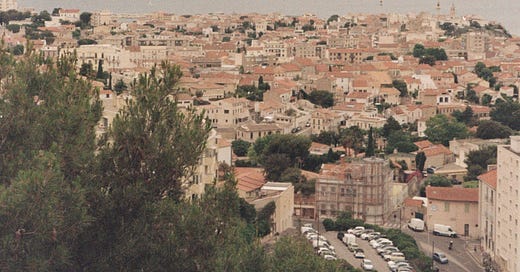
![[banchan]](https://substackcdn.com/image/fetch/$s_!bzBv!,w_36,h_36,c_fill,f_auto,q_auto:good,fl_progressive:steep,g_auto/https%3A%2F%2Fsubstack-post-media.s3.amazonaws.com%2Fpublic%2Fimages%2F4020a6b2-7d75-439c-8957-0777f2e5fe65_1200x1200.png)

